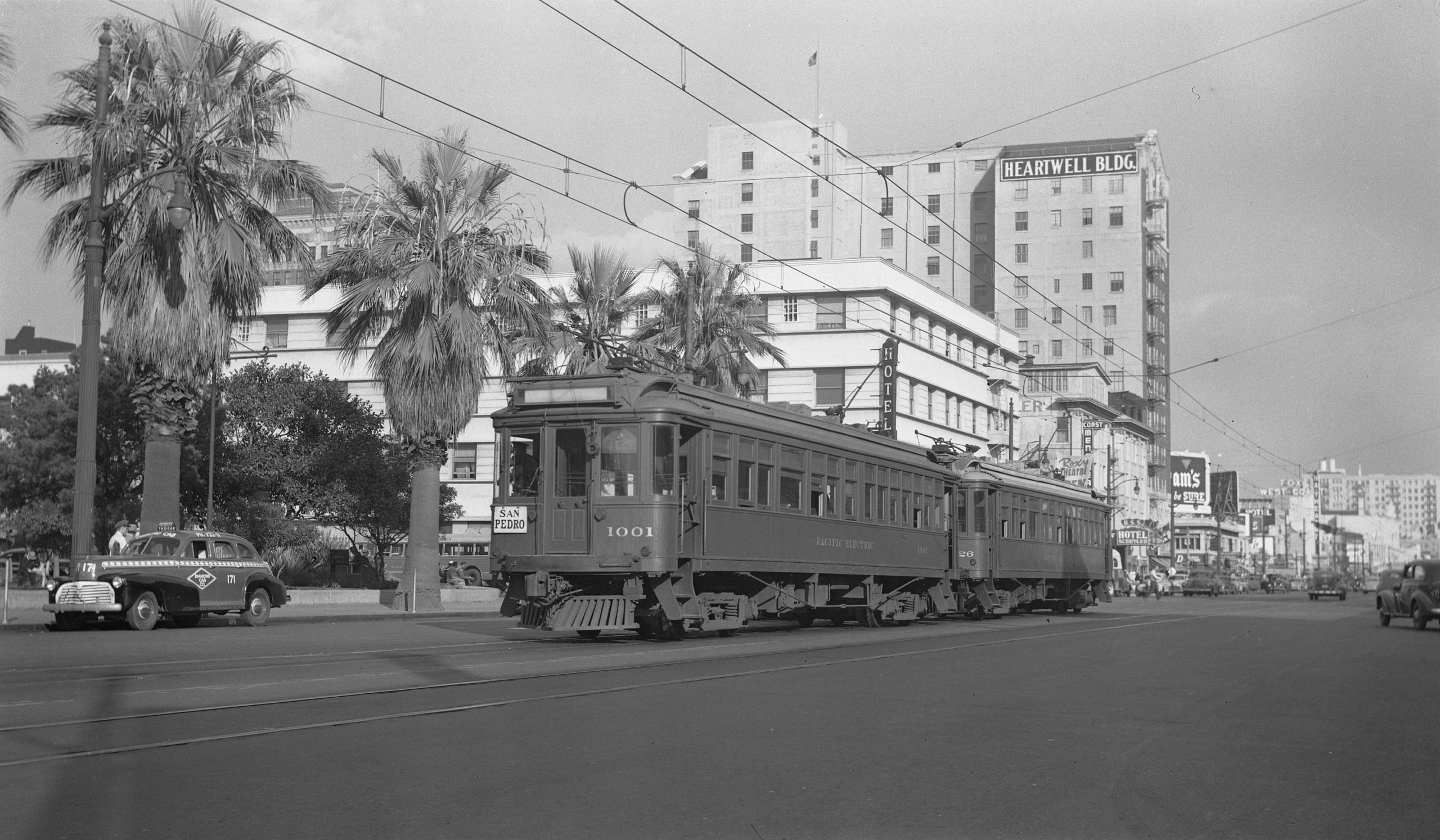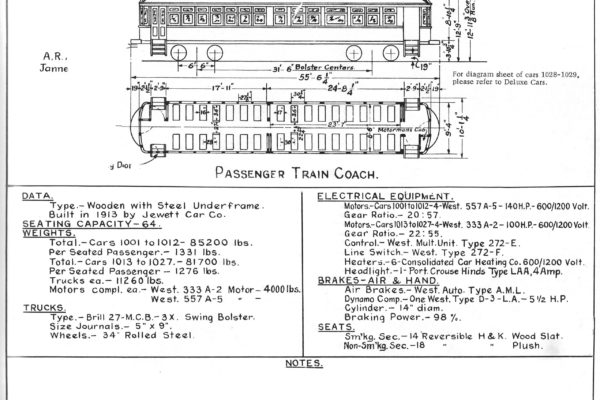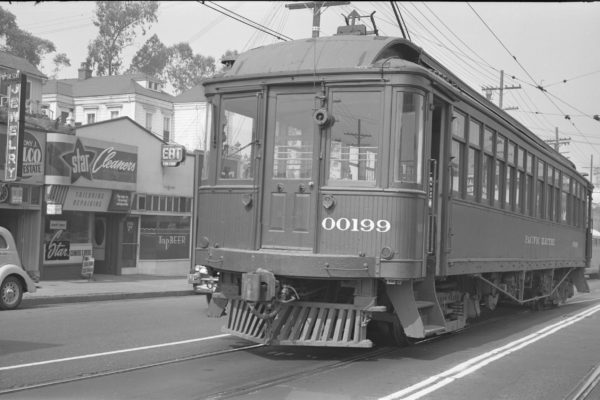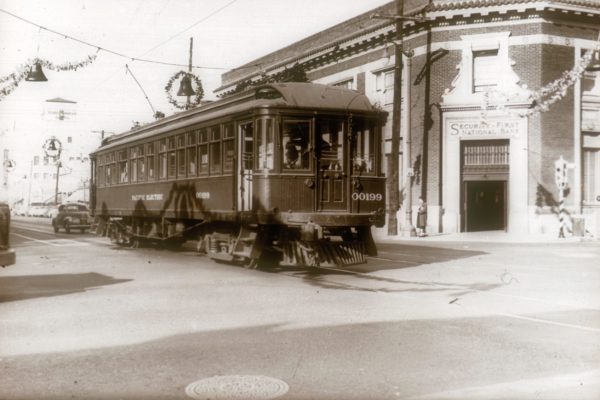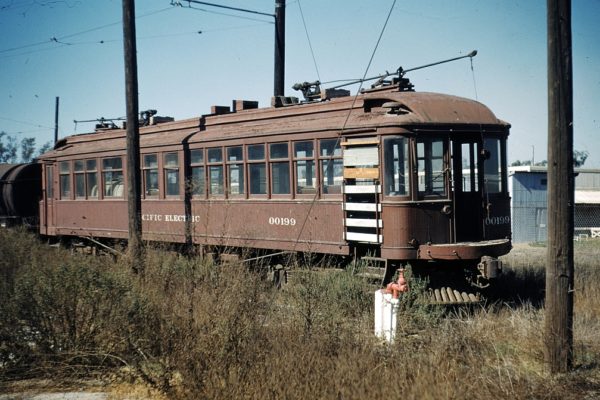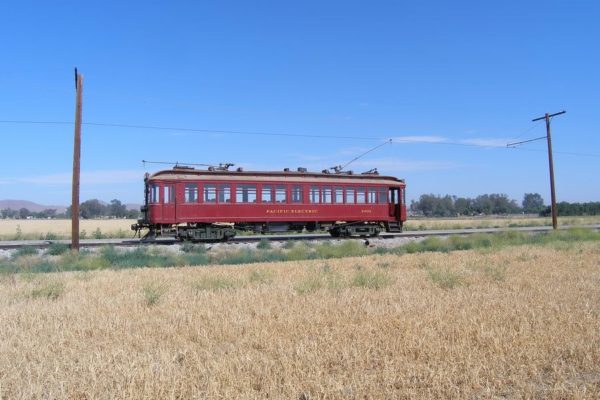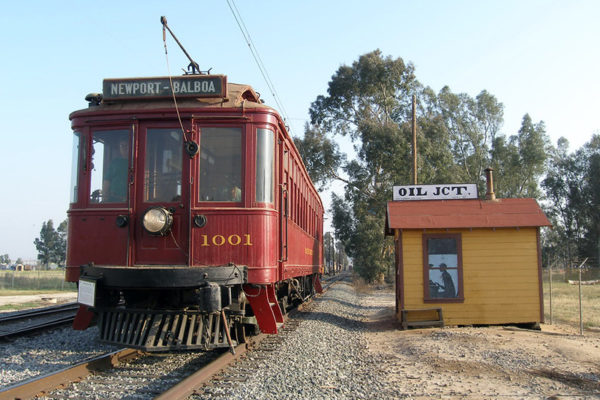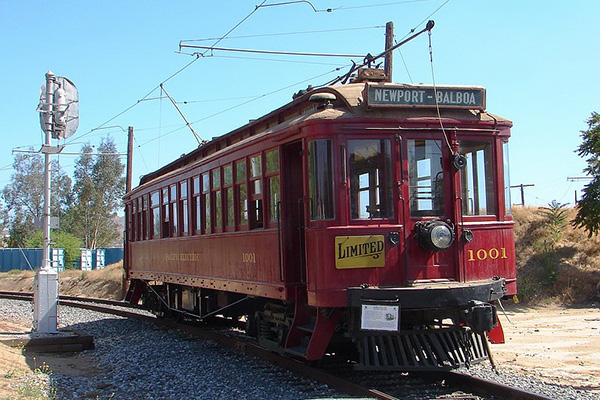With construction of Pacific Electric’s new line to San Bernardino from Los Angeles in 1912, larger and faster car cars were needed for service on this new line. The line was to be the longest line yet constructed and would be the only line to operate on 1200 volts DC, as compared with the rest of the system operating on a 600 volt system. PE placed an order for 45 cars of wooden construction with steel under frame from the Jewett Car Company of Jewitt, Ohio. Delivered in the summer of 1913 on their own wheels from Ohio, the ‘Tens’ were pressed into service that summer to run to Long Beach behind PE’s new 1601 class locomotives, the only time on record that this was done. The big new cars went through Pacific Electric’s general shops at 7th & Central Streets in Los Angeles to receive their motors, controls, and other equipment as quickly as possible. All cars got four Westinghouse 333-A-2 motors (100 hp), capable of 600-1200 volt DC operation for the San Bernardino Line. Disaster struck the Pacific Electric in 1913, when two trains of wooden bodied cars collided at Vineyard on July 13, 1913. (More info on the Vineyard Wreck). The death toll, destruction, and public demand prompted PE to order steel bodied cars in the future, making the Tens the last wooden cars ordered new by PE. On July 11, 1914, The San Bernardino Line opened using the Tens on the line until the arrival off the 1200 class steel cars in 1915.
After the arrival of the 1200 Class cars, the Tens were utilized on every interurban line on the Pacific Electric system with the exception of Western District lines utilizing Subway Terminal. (The Tens did not possess emergency braking equipment used in the subway). With the decline of passenger service after World War II, use of wooden cars dwindled, with surplus cars being scrapped by the PE at the Torrance Shops, including some of the Tens. Some of the Tens and 950 class continued service and were the last wooden passenger cars used on PE until 1950 with the abandonment of the Venice Short Line. The remaining Tens and 950’s were sold to National Steel at Terminal Island and scrapped during late 1950 and 1951.
.
In 1948, Pacific Electric decided it was in need of a rail grinding car, and selected 1001 to be converted for such use and renumbered 00199. Modifications included the removal of the passenger seats, adding, water tanks for ballast, and converting one of the trucks by adding carborundum blocks for rail grinding.
“It may be interesting to know that Rail Car 00199 covers the entire system. Its purpose is to grind down the high or rough spots on the rails. This August, 1951 is done by large carborundum blocks which are built into the trucks and then forced against the rail under great pressure. When we enjoy our smooth ride over the rails we can thank the crew on this car, which was formerly of the 1000 class.” (Pacific Electric Magazine)
Based out of the West Hollywood Carhouse, 00199 worked until 1952 when abandonment of rail passenger service was becoming inevitable.
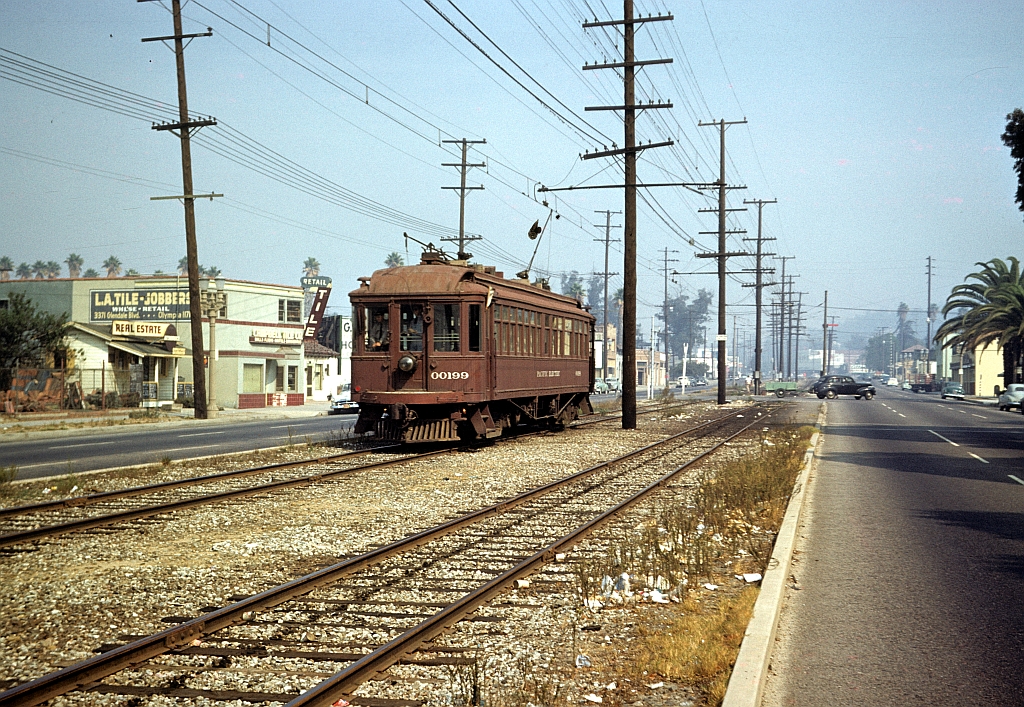
PE 00199 on the Glendale Burbank Line inbound at Richardson-Atwater, March 1953. Photographer Walter A Abbenseth. SCRM Collection.
Pacific Electric employee and railfan Walter Abbenseth had grown sentimental about the old wooden interurban car and purchased 00199 from the PE. Management and peers were confused by Walters’s enthusiasm, asking him to reconsider the foolish purchase.
“One day several months ago a large truck-and trailer appeared at Travel Town in Griffith Park, Los Angeles, with a big interurban car on its back. The car was obviously quite old, and it’s paint was shabby, its windows and doors boarded up, one of the pilots was missing along with one of the curved pieces of corner-post glass, and some unusual machinery seemed to be weighing one end of the car down. The car was quickly unloaded from the big trailer onto a short section standard gauge track, the rails of which had been laid only a short time previously by hard working members of the Electric Railroaders’ Association. The big car found a new home.
On the sides of the car were hastily painted out letters which spelled ‘Pacific Electric’ as well as the numbers ‘00199’. The curious queried the knowing and soon learned that here stood old #1001, the only rail grinder the Pacific Electric Railway had ever owned and the last remaining example of a great species, the famed PE Tens. Walter Abbenseth, the new owner of the car and a Pacific Electric enthusiast, nearly turned handsprings at the sight of the big car sitting there in the park and immediately made plans for its renovation.” (Pacific Rail News)
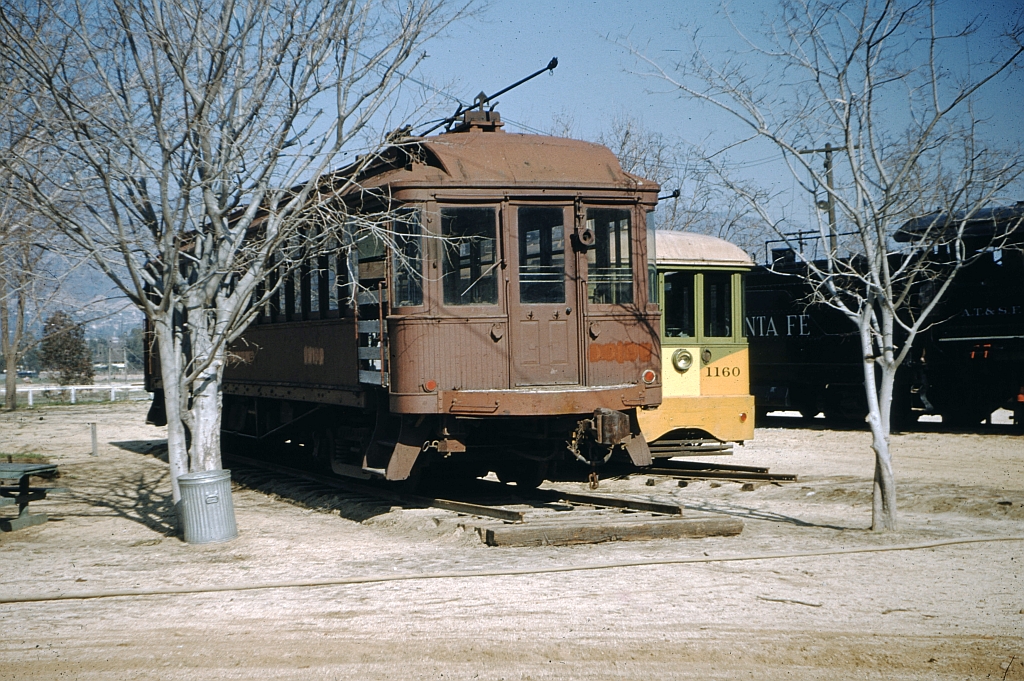
PE 00199 at Travel Town January 13, 1954. Photographer Ray Ballash. SCRM collection.
Walter began working on the car almost immediately and quickly returned the car to its original appearance as passenger car 1001. During the 1950’s several groups and individuals began collecting streetcars and displaying them at Travel Town. Construction of Interstate 5 planned to cut through the Travel Town exhibit and the streetcars needed to be relocated. One group, the Orange Empire Traction Company, moved their collection to Perris, CA in 1958. Other car owners, including Walter Abbenseth, also moved their cars to Perris. Walter subsequently bought five more PE cars for the museum; 314, 626, 637, 716, and 717. Work continued on 1001 at the Orange Empire Trolley Museum and 1001 was operated for the first time in 1973. Today, 1001 is still in need of restoration and operates for special events.
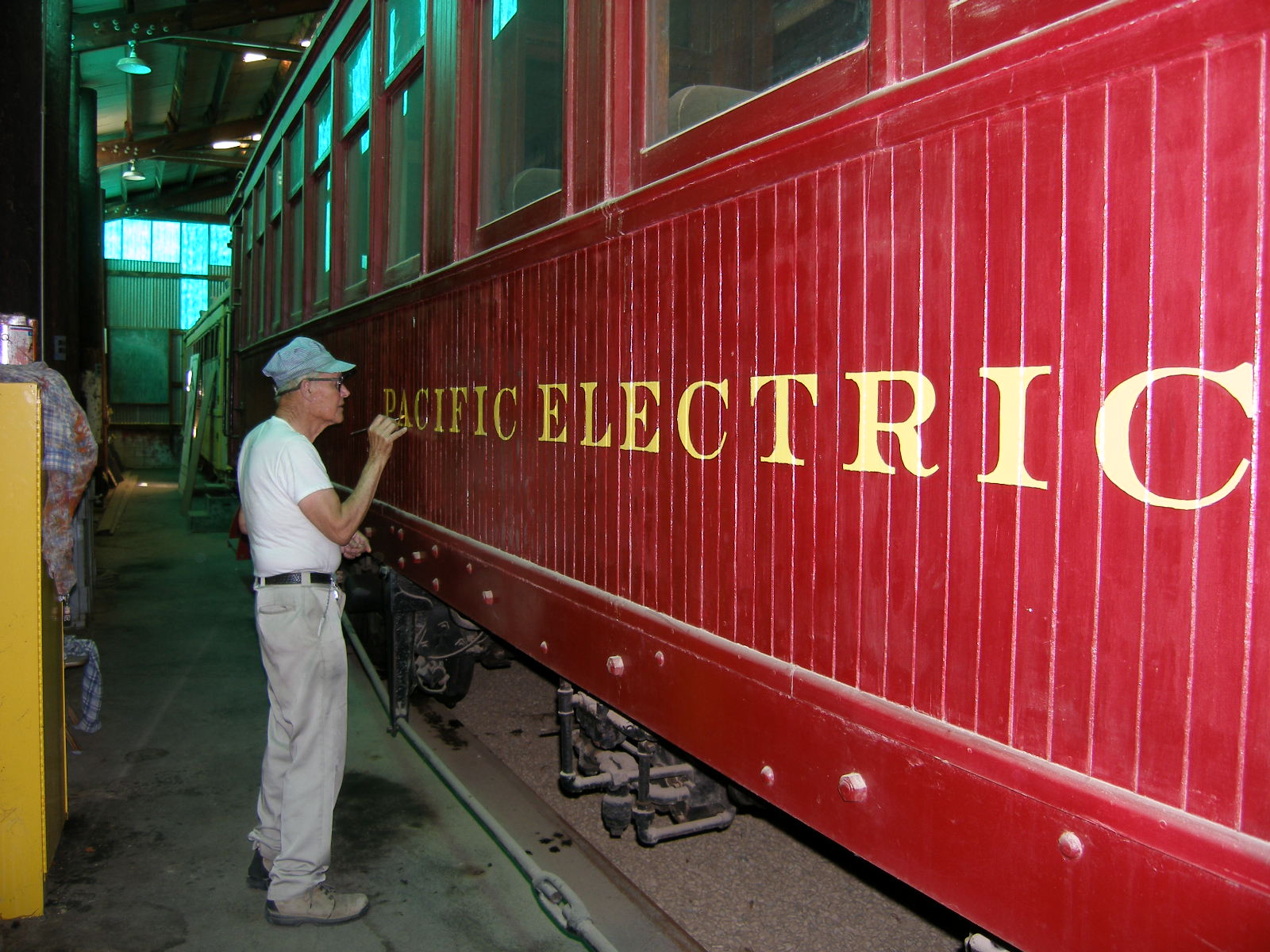
Walter Abbenseth and 1001.
Photographer John Smatlak.


